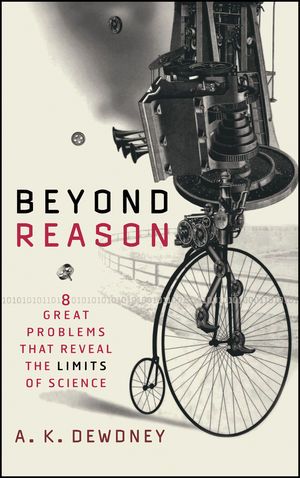Beyond Reason: Eight Great Problems That Reveal the Limits of ScienceISBN: 978-0-471-01398-3
Hardcover
240 pages
April 2004
 This is a Print-on-Demand title. It will be printed specifically to fill your order. Please allow an additional 10-15 days delivery time. The book is not returnable.
|
||||||
“…an intelligent book with considerable enthusiasm…” (Materials World, Vol.13, No.1)
"...one of the most rewarding science reads I have had the pleasure of in a long time....”(Chemistry & Industry, 17 January 2005)
“…fascinating…keeps firmly to the areas of science where the impossibility is demonstrable.” (Fortean Times, No 189, November 2004)
“…looks closely at eight great problems that reveal the limits of science…” (Materials World, September 2004)
Dewdney (A Mathematical Mystery Tour), best known for the Scientific American column “Computer Recreations,” which he wrote for eight years, sets an impressive goal for himself: “to discover how physical reality depends on mathematical reality, and to examine how mathematical reality manifests itself.” He attempts to do this by outlining four problems in the physical realm and four in the mathematical realm that he believes can never be solved. The topics he discusses are largely of great interest to science and math buffs: perpetual motion, the speed of light, Heisenberg’s uncertainty principle, chaos theory, squaring the circle, unprovable but true mathematical theorems, “simple” problems that no computer program can solve, and the fact that some mathematical problems would require an infinite amount of computer time to solve. In his chapter on chaos theory, for example, Dewdney does a very nice job of explaining why we will never be able to predict the weather accurately more than four days in advance. The problem throughout the book, however, is that he alternates between colorful prose or explanations of basic terms (such as “primary number”) and relatively dense mathematics (transcendental and transfinite numbers), never settling on who the appropriate audience for this study might be. B&w illus. Agent, Linda McKnight. (May) (Publishers Weekly, April 5th, 2004)



